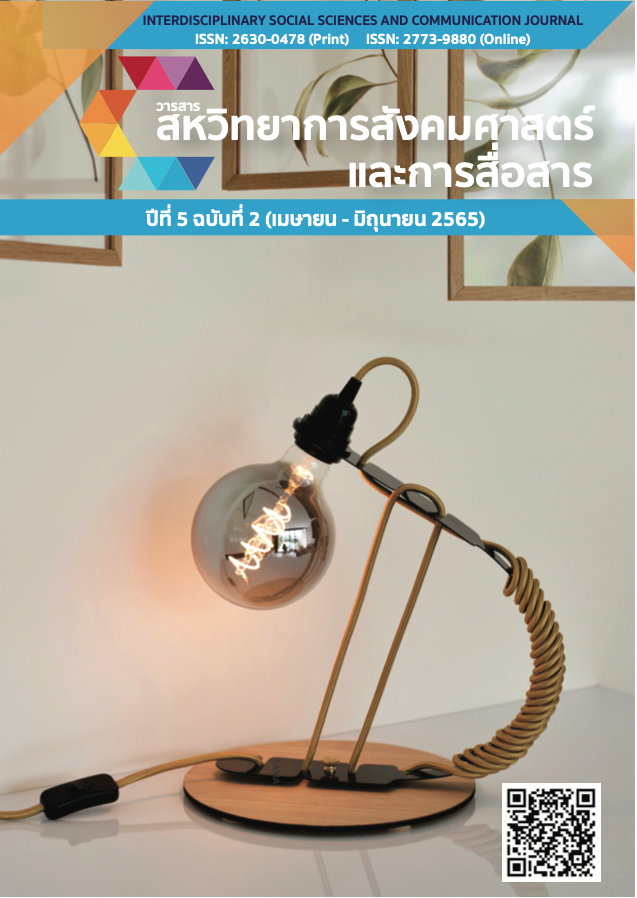ปัจจัยสนับสนุนที่ทำให้เกิดการบ่มเพาะด้านความคิดสร้างสรรค์ ต่อการเป็นผู้ประกอบการไทย
Main Article Content
บทคัดย่อ
การวิจัยเรื่อง ปัจจัยสนับสนุนที่ทำให้เกิดการบ่มเพาะด้านความคิดสร้างสรรค์ต่อการเป็นผู้ประกอบการไทย มีวัตถุประสงค์ 4 ประการ ดังนี้ (1) เพื่อศึกษาถึงระดับการสนับสนุนจากครอบครัว การสนับสนุนจากสถานศึกษา การสนับสนุนจากสังคม การสนับสนุนจากองค์การธุรกิจ (2) เพื่อศึกษาถึงระดับการรับรู้ความคิดเชิงสร้างสรรค์ ของนักศึกษา (3) เพื่อศึกษาถึงระดับการรับรู้การสร้างศักยภาพทางธุรกิจสร้างสรรค์ และ (4) เพื่อศึกษาถึงอิทธิพลการสนับสนุนจากครอบครัว การสนับสนุนจากสถานศึกษา การสนับสนุนจากสังคม การสนับสนุนจากองค์การ ที่ส่งผ่านความคิดเชิงสร้างสรรค์ ไปสู่การที่มีสร้างศักยภาพทางสร้างสรรค์ธุรกิจซึ่งการวิจัยครั้งนี้เป็นการวิจัยเชิงปริมาณ ใช้แบบสอบถามเป็นเครื่องมือวิจัย และดำเนินการวิเคราะห์ข้อมูลทางสถิติเพื่อทดสอบสมมุติฐาน มีกลุ่มตัวอย่างเป็นนักศึกษาระดับปริญญาตรี คณะบริหารธุรกิจในมหาวิทยาลัยราชภัฏที่ร่วมโครงการออมสินยุวพัฒน์รักษ์ถิ่น จำนวน 400 คน ผลวิจัยพบว่า (1) การสนับสนุนจากองค์การธุรกิจ มีอิทธิพลทางตรงต่อ การสร้างศักยภาพทางสร้างสรรค์ธุรกิจ (2) ความคิดสร้างสรรค์มีอิทธิพลทางตรงต่อการสร้างศักยภาพทางธุรกิจสร้างสรรค์ ทั้งนี้งานวิจัยนี้สถาบันการศึกษา และองค์การธุรกิจสามารถใช้เป็นแนวทางในการผลิตนักศึกษาที่มีศักยภาพทางความคิดสร้างสรรค์ในการเตรียมตัวเป็นผู้ประกอบการ เพื่อสร้างผลลัพธ์เชิงนวัตกรรมทางธุรกิจ
Article Details

อนุญาตภายใต้เงื่อนไข Creative Commons Attribution-NonCommercial-NoDerivatives 4.0 International License.
** ข้อความ ข้อคิดเห็น หรือข้อค้นพบ ในวารสารสหวิทยาการสังคมศาสตร์และการสื่อสารเป็นของผู้เขียน ซึ่งจะต้องรับผิดชอบต่อผลทางกฎหมายใด ๆ ที่อาจเกิดขึ้นจากบทความและงานวิจัยนั้น ๆ โดยมิใช่ความรับผิดชอบของคณะนิเทศศาสตร์ มหาวิทยาลัยราชภัฏรำไพพรรณี **
เอกสารอ้างอิง
Adams, G. A., King, L. A., & King, D. W. (1996). Relationships of job and family involvement, family social support, and work-family conflict with job and life satisfaction. Journal of Applied Psychology, 81(4), 411.
Alborzi, M. (2012). The role of parenting beliefs and attitude to children’s creative thinking creativity. Psychological and Social Studies of Women, 9(3), 7-24.
Bellin, H. F., & Singer, D. G. (2006). My magic story car: Video-based intervention to strengthen emergent literacy of at-risk preschoolers. In D.G. Singer, R. M. Golinkoff, & K. Hirsh-Pasek, (Eds.), Play=learning: How play motivates and enhances children’s cognitive and social-emotional growth. Oxford University Press.
Bruce G. Link, & Jo C. Phelan. (2001). Conceptualizing Stigma. Annual Review of Sociology, 27(5), 363-385.
Bandura, A. (1997). Self-efficacy: The exercise of control. W H Freeman/Times Books/ Henry Holt & Co.
Besançon, M., & Lubart, T. I. (2008). Differences in the development of creative competencies in children schooled in diverse learning environments. Learning and Individual Differences, 18(4), 381-389.
Blankfeld, D. F., & Holahan, C. J. (1996). Family support, coping strategies, and depressive symptoms among mothers of children with diabetes. Journal of Family Psychology, 10(2), 173–179.
Channer, J., Owens, P., & Lee, C.(2013). Connecting and growing creative businesses through engagement with higher education institutions. Arts & Humanities Research Council.
Coltan Scrivner and Dario Maestripieri . (2018). Creativity Patterns in the Production of Scientific Theories and Literary Fiction," KNOW: A Journal on the Formation of Knowledge, 2(1), 137-154.
Cropley A. (2006). In praise of convergent thinking. Creativity Research Journal, 18(3), 391-404.
Duru Erdinç, (2017). Procrastination, self-esteem, academic performance, and well-being: A moderated mediation model. International Journal of Educational Psychology, 6(2), 97.
George Land. (1968). Evidence that children become less creative over time (and how to fix it). Retrieved from. https://www.ideatovalue.com/crea/nickskillicorn/2016/08/evidence-children-become-less-creative-time-fix/
James E. Johnson, James Christie, & Francis Wardle. (2005). Play, Development and Early Education. Retrieved from. https://www.pearson.com/us/higher-education/program/ Johnson-Play-Development-and-Early-Education/PGM155363.html?tab=overview
Krause, N. (1986). Social support, stress, and well-being. Journal of Gerontology, 41(4), 512-519.
Lubart, T. I., Zenasni, F., & Barbot, B. (2013). Creative potential and its measurement. International Journal of Talent Development and Creativity, 1(2), 41-51.
Martins E, & Terblanche, F. (2003). Building organizational culture that stimulates creativity and innovation. European Journal of Innovation Management 6(1), 64-74.
Mina, A. and Probert, J. (2012). Enhancing Collaboration, Creating Value: Business interaction with the UK research base in four sectors, London: Centre for Business Research at University of Cambridge and CIHE.
Murmann, J. (2006) Knowledge and Competitive Advantage: The Co evolution of Firms, Technology, and National Institutions. Cambridge University Press: Cambridge.
Papa, R. (2010). Technology leadership for school improvement: Thousand Oaks, CA: Sage.
Taylor, S. E. (2011). Social support: A review. In M. S. Friedman (Ed.), The handbook of health psychology (pp. 189-214). Oxford University Press.
Teufel-Shone, N. I., Staten, L. K., Irwin, S., Rawiel, U., Bravo, A. B., & Waykayuta, S. (2005). Family cohesion and conflict in an American Indian community. American Journal of Health Behavior, 29(5), 413-422.
Tierney, P., & Farmer, S. (2002). Creative self-efficacy: Its potential antecedents and relationship to creative performance. Academy of Management Journal, 45(6), 1137-1148.
Wang, P., & Rode, J. C. (2010). Transformational leadership and follower creativity: The moderating effects of identification with leader and organizational climate. Human Relations, 63(8), 1105-1128.
Wilson, T., Sir (2012) A Review of Business-University Collaboration, HMSO, London
Weisberg R. W. (1999).Creativity and knowledge: A challenge to theories. In: Sternberg, R.J. (Eds.), Handbook of creativity (P.226-250). Cambridge University Press,


